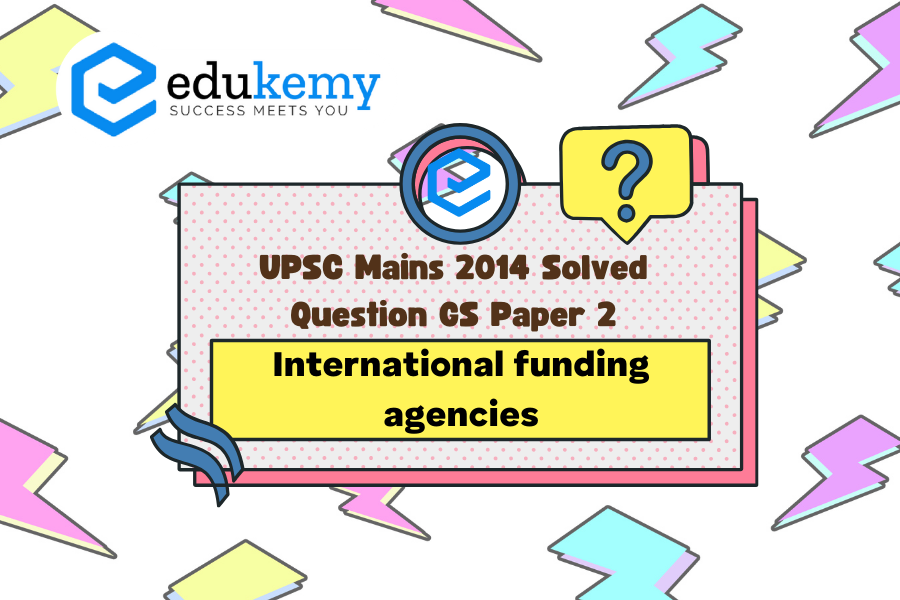International funding agencies often impose special terms for economic participation, requiring a significant portion of the aid to be allocated for sourcing equipment from leading countries. Proponents argue that such conditions can offer several merits. Firstly, by sourcing equipment from technologically advanced nations, recipient countries can access high-quality goods, potentially enhancing project efficiency and effectiveness. Additionally, it may facilitate knowledge transfer and skill development as recipients engage with cutting-edge technologies. Moreover, aligning with leading countries for equipment procurement can foster international partnerships, paving the way for future collaborations and investments. However, in the Indian context, there exists a compelling case to question the acceptance of such conditions. India boasts a burgeoning domestic manufacturing sector and technological prowess in various fields. Insistence on sourcing equipment solely from leading countries may undermine the development of indigenous industries and technological self-reliance. Furthermore, it may perpetuate dependence on foreign markets and hinder efforts towards fostering innovation and economic sovereignty. Hence, while such terms may offer short-term benefits, they may not always align with the long-term developmental goals and strategic interests of India.
Tag: Important International institutions, agencies and fora – their structure, mandate.
Contents
Decoding the Question:
- In the Introduction, try to give a brief description about International funding agencies and aid offered by them.
- In Body, elaborate impact of aid from the International funding agencies in India.
- In Conclusion, try to conclude that India changed its position from a receiving country to a donor country.
Answer:
International funding agencies are known for the generous foreign aid which includes international transfer of capital, goods, or services for the benefit of the recipient country or its population. Aid can be economic, military, or emergency humanitarian (e.g., aid given following natural disasters). Though the aid seems beneficial for the receiving country, many times donor countries or Organization interest is more prevalent than the receiving country.
For India, aid from International funding agencies have the following impacts:
- During the LPG reform in 1991, for India, the immediate response was to secure an emergency loan of $2.2 billion from the International Monetary Fund (IMF) by pledging 67 tons of India’s gold reserves as collateral. India had to agree with the series of large-scale reforms then began under the IMF’s structural adjustment programme (SAP).
- The most common type of foreign aid is official development assistance (ODA), which is sometimes channeled through international organizations and nongovernmental organizations (NGOs). But a report from Intelligence Bureau accused NGOs such as Greenpeace, Cordaid, Amnesty, and Action Aid for reducing India’s GDP by 2-3% per year.
- Although traditionally considered largely as a recipient of foreign aid, India in the last decade has increasingly transitioned toward becoming an “emerging donor” country. As an emerging donor, India’s new aid policy was far from unique in that it was driven not by pure altruism, but primarily from the domestic and international political and economic benefits that would accrue from it.
- International Development Association (IDA), part of the World Bank, is one of the largest sources of assistance for the world. IDA help to India during economic reforms 1991 has helped to restructure the economy as,
India is not a member of the Development Assistance Committee, which includes World’s major donor countries. Despite that, India has recorded donations to various countries. The Indian model of developmental cooperation is comprehensive and involves multiple instruments, including grant-in-aid, line of credit and capacity building, and technical assistance. Depending on the priorities of partner countries, India’s development cooperation ranges from commerce to culture, energy to engineering, health to housing, IT to infrastructure, sports to science, disaster relief, and humanitarian assistance to restoration and preservation of cultural and heritage assets.
In case you still have your doubts, contact us on 9811333901.
For UPSC Prelims Resources, Click here
For Daily Updates and Study Material:
Join our Telegram Channel – Edukemy for IAS
- 1. Learn through Videos – here
- 2. Be Exam Ready by Practicing Daily MCQs – here
- 3. Daily Newsletter – Get all your Current Affairs Covered – here
- 4. Mains Answer Writing Practice – here


